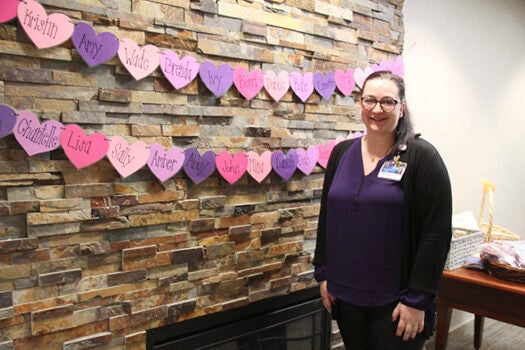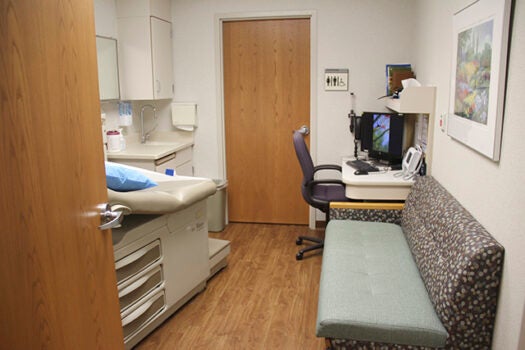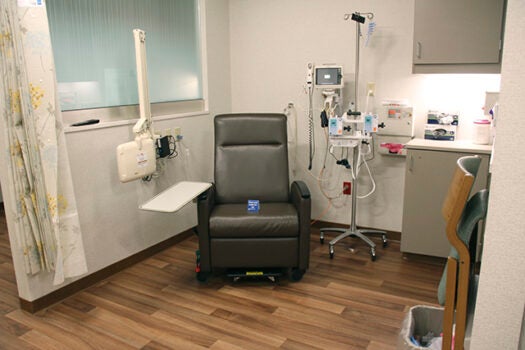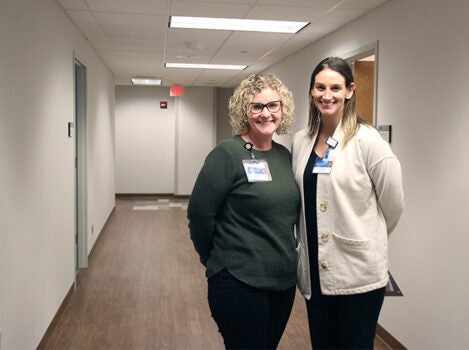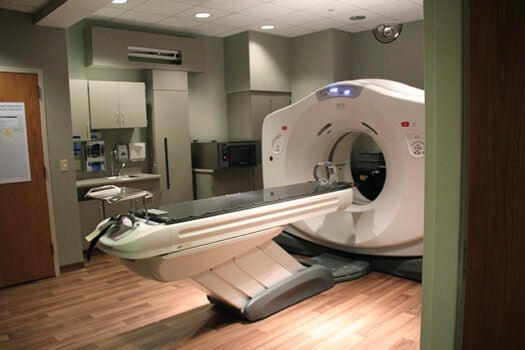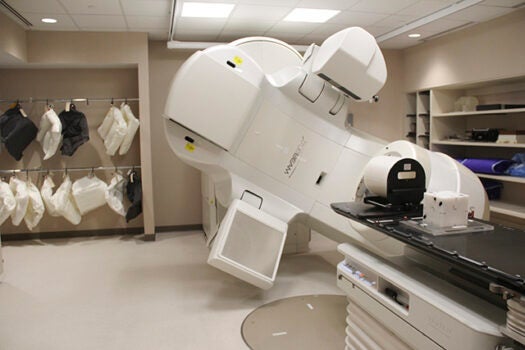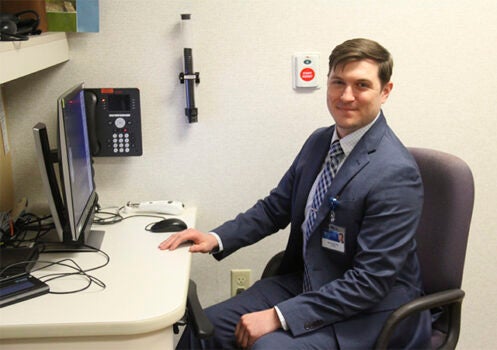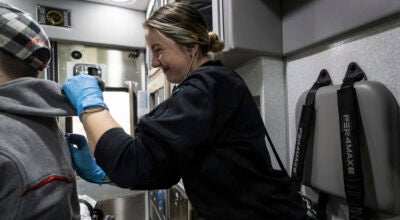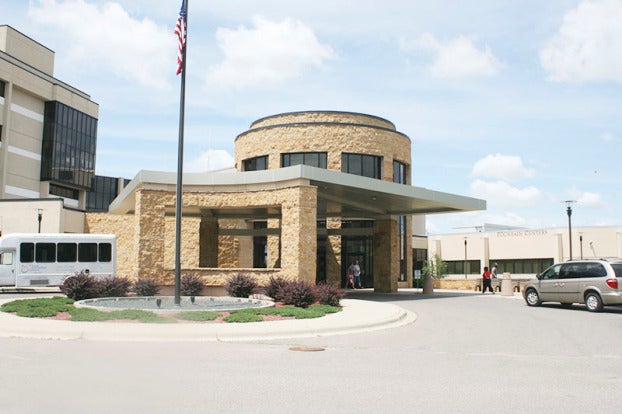Meet some of the faces behind the Albert Lea Cancer Center
Published 9:26 am Wednesday, February 28, 2024
|
Getting your Trinity Audio player ready...
|
When any patient receives a cancer diagnosis, it can be daunting.
The unknown may lead people to feel scared, alone or sad about the future.
But as patients go through their cancer journey at the Cancer Center at Mayo Clinic Health System in Albert Lea, they are surrounded by compassionate, knowledgeable staff to help them along the way.
Whether they are receptionists, nurses, social workers, radiation therapists, oncologists or others in between, the staff become a family of support for patients as they figure out how to proceed from that initial cancer diagnosis.
One of those staff is Abigail Wacholz, a social worker, who started in patient social work in oncology in Rochester after graduating with her master’s degree.
She has since worked as the first social worker of Albert Lea’s Cancer Center for the last five years, covering patients in both medical and radiation oncology at the center. With medical oncology, patients receive oral or IV chemotherapy, while with radiation oncology, they receive external radiation beam therapy.
Wacholz also virtually covers Owatonna, Austin, Red Wing and Northfield.
Wacholz said she first meets with patients in their initial consult into the Cancer Center, where she gets to know them and helps walk them through their resources.
“I’m kind of the go-to for support, resources, financial, transportation, food insecurity, coping adjustment — all that kind of stuff,” she said.
She sees on average probably four to six patients a day — some are new, while others she has met before and is following up with. She said the Cancer
Center serves people not only from Albert Lea but people from as far away as two hours into Iowa.
“I love walking alongside patients and their families through some of like the darkest times of their lives,” Wacholz said. “It’s so scary, it’s vulnerable, there’s a lot of unknown. Just being able to bear witness on the successes and also the struggles. We become family to the patients.”
She said while her job can be emotional and has its highs and lows, she enjoys supporting the patients in the different parts of their journeys, whether they reach the end of their treatment or in the alternative if she is able to help patients with their last wishes when treatment is no longer an option.
Another important part of her job is providing support to the other staff and helping them acknowledge their feelings as they process the different outcomes of their patients.
“I think when people meet me they think you’re an oncology social worker they think, ‘Oh, that must be so hard,’” she said. “It’s really not hard when it’s something I enjoy doing … I’m really just here helping patients along their journey … helping patients find their inner strength to get through their treatments.”
‘I knew I wanted to do something with cancer’
Jenni Mattson and Jenna Herzog are both operations managers in radiation oncology in the Cancer Center.
Mattson has been a part of the center for 20 years, 17 of that which was spent with direct patient care as a radiation therapist and as a supervisor.
She said she has always been invested in cancer care as she had many loved ones who were touched by cancer growing up.
“I knew I wanted to do something with cancer,” she said.
She said Albert Lea has a great resource in the center, which can provide both radiation and chemotherapy in one department — all with Mayo Clinic quality care. She also appreciates the collaboration the team has with doctors in Rochester and that residents who start their treatment in Rochester can transfer it to Albert Lea to be closer to home.
Herzog has been with Mayo for eight years and specifically supports medical oncology for all of the Mayo Health System sites in Minnesota.
“This is a really sensitive time in our patient’s lives,” Herzog said. “This is incredibly sensitive. It’s a very satisfying part of both of our roles to know that we’re making such an impact in individuals’ lives and their caregivers.”
While they don’t have direct patient care, they oversee the day-to-day operations of the center, making sure all runs smoothly as they oversee its 25 employees, including providers, schedulers, nurses, social work, pharmacy, dietitians and financial counselors.
‘You start as neighbors and then feel more like family’
John Yeakel is one of the newer staff members of the Cancer Center, after starting as a radiation oncologist in September.
Yeakel, originally from Mazeppa, north of Rochester, grew up with two parents who both worked in the field — his mother as a radiation therapist and his father a dosimetrist.
He said he originally thought about going into primary care or family medicine, but he liked the blend that radiation oncology would provide him.
He completed his undergraduate degree in La Crosse and went to medical school at the University of Minnesota, completing his radiation oncology residency at the University of California-Irvine in Orange County. He moved back to the area in September.
He said he had gotten his feet wet with Dr. Timothy Kozelsky, another radiation oncologist at the Cancer Center, during a nine-month rural curriculum in Albert Lea. Now, he works alongside Kozelsky as the second radiation oncologist there. There are also two medical oncologists.
He said he typically first sees patients after they have received their cancer diagnosis, when they begin talking with the patient about treatments. He looks at their diagnosis, type of cancer, stage of cancer and other factors when considering how to move forward. There are typically three options for moving forward after a diagnosis: surgery, chemotherapy and radiation therapy.
Some people go through all of the options, while others may only go through one or two.
“The main thing I like to emphasize … it’s not like the diagnosis and see you later,” Yeakel said. “it’s highlighting the next steps.”
He said one of the nice things about radiation is that it can be a useful spot treatment for problem areas and can really improve patients’ lives when patients have exhausted other options.
He enjoys getting to know patients throughout the process.
“You spend enough time taking care of these patients and seeing them — especially being in a small-town setting,” he said. “A lot of people already know you or have connections somehow. You might start as neighbors and then feel more like family once you help them through these difficult times.”
He said radiation can be a scary topic for many, and there are many misconceptions that people have of the treatment. At the Cancer Center, radiation therapy involves external radiation beam therapy, which is conducted all with X-Rays.
It does not mean someone going through radiation will be radioactive or glowing green or pose a harm to pets or babies.
Yeakel said newer techniques of radiation are getting better and better in terms of side effects, and he noted that the effectiveness of the treatments is good.
The time patients are on radiation has decreased as doctors continue to study the treatment.
How many weeks a patient will need radiation depends on a variety of factors.
“It’s safe, beneficial … you don’t touch anything, and you’re not going to do anything to your family,” he said.
Yeakel said while he traditionally works normal business hours, he or others are available on an after-hours phone through the center.


